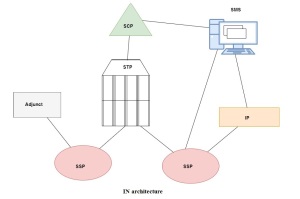
Introduction to Intelligent Network
Posted on |
Introduction to Intelligent Network
BISDN is not technology but a combination of multiple technologies. The three basic technologies of BISDN are ATM, SONET, IN i.e. intelligent network. Here is a brief introduction to IN.
Intelligent Network
IN is not a technology or set of services but rather a concept for a new approach for the development and deployment of telecommunications and information services. An IN permits functionality and capabilities to be distributed flexibly at a variety of network entries and allows the service provisioning via a service-independent control architecture.
IN was developed with the following objectives in mind :
- rapid development and deployment of services
- ubiquitous service access
- multimedia service support, i.e., integrating voice, data and video.
- vendor independence
- cost-effective service delivery environment
- compatibility with existing networks
IN’s long-term goal is the ability to introduce new services or change existing services quickly without having to adapt service switching point (SSP) software.
Having defined the objective of IN, let’s now look at the IN architecture.
The figure shows a high-level view of IN architecture and how the different components interact with each other.
The following are the elements in the IN network :
- service management system (SMS)
- service control point (SCP)
- signal transfer point (STP)
- service switching point (SSP)
- intelligent peripheral (IP)
The function of these IN network elements are described as follows –
Service Management System
The SMS is usually owned by the network operators. It updates the SCPs with new data or programs and collects statistics from them. SMS also enables the service subscriber to control his or her own service parameters via a terminal linked to the SMS. For example, the subscriber can define the day and time when a number should be routed to a specific route. This modification is filtered or validated by the network operator. SMS is a commercial computer, usually a mainframe, that provides a development environment for new services.
Service Control Point
SCP is used when new IN services are introduced into the network and activated. If a service is based on functional components, the functional components are elected using a service logic interpreter. Some SCP service requires a large amount of data that must be reside on direct-access storage devices such as disks. The service programs and data are updated from the SMS. SCP is a commercial computer or modified switch. It should be able to access databases efficiently and reliably and provide a software platform for rapid service creation.
Signal Transfer Point
STP is part of common channel signaling no.7 network, or simply SS7. SS7 is a standardized communication interface through which the goal of the multi-vendor SCP and SSP can be achieved. STP switches SS7 messages to different SS7 nodes. The use of standalone or integrated STP depends on specific network configurations. STP is normally produced by traditional switch manufacturers such as Northern Telecom or AT&T.
Service Switching Point
SSP serves as an access point for service users and executes heavily used services. It is produced by traditional switch manufacturers. The higher-layer protocol of SS7, namely transaction capabilities application part (TCAP), is used to communicate between the SSPs and the SCPs.
Intelligent Peripheral
IP provides enhanced services controlled by an SCP or SSP. It is more economical for several users to share an IP because the capabilities in IP are either not in SSP or too expensive to pull in all SSPs. A typical example of IP functions are customized announcements, a speech synthesizing, voice messaging, speech recognition, or database information that is made accessible to the end user. By making IP physically separate from SSP but connected via a standard interface enables any vendor to own and operate an IP, thus enabling the IP provider to provide value-added services to its user.
Books you may interested







